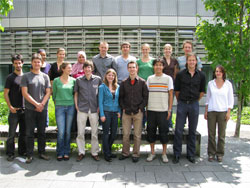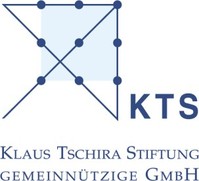Team:Heidelberg
From 2009.igem.org
Naoiwamoto (Talk | contribs) |
Naoiwamoto (Talk | contribs) |
||
| Line 13: | Line 13: | ||
[[Image:Russian_flag.jpg|middle|15px]] [[Team:Heidelberg#Ликвидатор бактерий созданный из генетических материалов|Pусский]] [[Image:China_flag.jpg|middle|15px]] [[Team:Heidelberg#由基因元件拼装的细菌杀手|中文]] [[Image:Japanese_flag.jpg|middle|15px]] [[Team:Heidelberg#殺し屋のバクテリアを遺伝子コンストラクトキットで作る|日本語]]*** --> | [[Image:Russian_flag.jpg|middle|15px]] [[Team:Heidelberg#Ликвидатор бактерий созданный из генетических материалов|Pусский]] [[Image:China_flag.jpg|middle|15px]] [[Team:Heidelberg#由基因元件拼装的细菌杀手|中文]] [[Image:Japanese_flag.jpg|middle|15px]] [[Team:Heidelberg#殺し屋のバクテリアを遺伝子コンストラクトキットで作る|日本語]]*** --> | ||
| - | |||
==Project Abstract== | ==Project Abstract== | ||
| Line 81: | Line 80: | ||
<html> | <html> | ||
| + | <body id="home"></body> | ||
<embed src="http://www.oneplusyou.com/bb/files/countdown/countdown.swf?co=8fc332&bgcolor=FFFFFF&date_month=10&date_day=30&date_year=0&un=IGEM JAMBOREE 2009&size=normal&mo=10&da=31&yr=2009" type="application/x-shockwave-flash" pluginspage="http://www.macromedia.com/go/getflashplayer" width="240" height="80" wmode="transparent"></embed> | <embed src="http://www.oneplusyou.com/bb/files/countdown/countdown.swf?co=8fc332&bgcolor=FFFFFF&date_month=10&date_day=30&date_year=0&un=IGEM JAMBOREE 2009&size=normal&mo=10&da=31&yr=2009" type="application/x-shockwave-flash" pluginspage="http://www.macromedia.com/go/getflashplayer" width="240" height="80" wmode="transparent"></embed> | ||
</div> | </div> | ||
| Line 103: | Line 103: | ||
<br> | <br> | ||
<br> | <br> | ||
| - | |||
|} | |} | ||
Revision as of 20:42, 6 October 2009
|
Project AbstractEarly efforts in synthetic biology have focused on using prokaryotes as an engineering chassis, whereas novel developments indicate a shift towards an eukaryotic synthetic biology. The value of eukaryotic synthetic biology is manifold: in medical research, it will accomplish new ways of gene therapy; in plant biotechnology, it can contribute to the struggle for a sustainable food and energy solution. Finally, the ability to assemble and analyze complicated biological systems step by step will allow a revolutionary approach to fundamental research. Establishing new standards for iGEM, the Heidelberg 2009 team will be concerned with developing ways for measuring promoters in mammalian cells, a default chassis and a first evaluation of the recently postulated BioBrick beta proposal 2 (Tom Knight). Considering the importance of controlling gene expression, our team's work will focus on natural and synthetic mammalian promoters. Our vision is to provide the synthetic biology community with a methodical library of such promoters (with different output strength and sensitivity to different regulatory proteins) and a model which can provide guidance for the development of further synthetic promoters. Our efforts will therefore, from the very beginning, equally entail bioinformatics and wet lab work. As an early application for such a promoter library, our team will attempt to develop an assay which can monitor the activity of several pathways in one cell. Such an assay is of high value for biological research as it can be applied for studying stem cell differentiation, tumor formation, apoptosis and autophagy as well as drug response. Our team will apply the assay towards testing several anti-cancer drugs. A computer-based model will lay the foundations for future work. It will help us to build a logic that integrates the promoter activities and will allow us to predict the possibilities of a single functional output. iGEM ideaiGEM (international genetically engineered machines competition) is an international competition in synthetic biology, hosted by the MIT in Boston. The aim of this competition is to answer a basic question, Randy Rettberg, the director of iGEM once described as follows: "Can simple biological systems be built from standard, interchangeable parts and operated in living cells? Or is biology just too complicated to be engineered in this way?" The iGEM-approach to answer that question is to actually try to engineer biological systems with a proper function. Therefore more than 100 interdisciplinary student teams from all over the world, mainly consisting of undergraduate students in biology, biochemistry, engineering, informatics and mathematics, carry out different projects during the summer. These projects reach from medical applications, i.e. genetically modified bacteria used in cancer-treatment to environmental and manufacturing projects, i.e. the construction of a watch-like counter consisting of living cells. In contrast to classical genetic engineering where only one gene is transferred from organism A to organism B, synthetic biology goes forward the construction of whole new systems with a completely new function. Therefore, all iGEM-Teams get access to a gene- Database called registry, where hundreds of different genetic parts with characterized functions are available in a “plug-and-play” –like format. These parts can be simply stuck together to build functional systems. The rising number of iGEM-Teams over the last years as well as the upcoming public interest in iGEM, the iGEM-Teams’ projects and synthetic biology in general shows, that synthetic biology will for sure have a great impact in many different fields of both scientific research and every-day life. Das ProjektWährend sich die anfänglichen Bestrebungen der Synthetischen Biologie auf prokaryotische Systeme beschränkten, zeichnet sich gegenwärtig ein Wandel hin zu eukaryotischen Systemen ab. Die synthetische Biologie in Eukaryoten kann von vielseitigem Nutzen sein: im Bereich der medizinischen Forschung könnten neuen Ansätzen in der Gentherapie entwickelt werden; in der grünen Biotechnologie wird die Synthetische Biologie zu einer nachhaltigen Lösung der weltweiten Energie- und Nahrungsprobleme beitragen. Letztendlich wird die Möglichkeit komplexe künstliche biologische Systeme zu erschaffen und zu analysieren einen revolutionären Ansatz in der Grundlagenforschung darstellen. Um neue Standards zu etablieren, wird das diesjährige iGEM Team Heidelberg sich mit der Einführung von neuen Messmethoden für Promotoren in Säugerzellen und mit der Entwicklung einer Standard-Zelllinie beschäftigen. Darüber hinaus werden wir eine erste Evaluation des kürzlich von Tom Knight postulierten BioBrick Beta Proposal 2 Standard durchführen. Eine kontrollierbare Genexpression ist essenziell in vielen Bereichen der synthetischen Biologie. Aus diesem Grund setzt sich unser Team die Entwicklung von natürlichen und synthetischen Promotoren zum Ziel. Unser Beitrag zur internationalen Gemeinschaft der synthetischen Biologie wird eine systematische Promotorbibliothek sein (mit verschiedenen Stärken und verschiedener Sensitivität gegenüber Transkriptionsfaktoren bzw. Signalwegen). Dafür werden wir ein Modell entwickeln, welches es uns erlaubt solche synthetischen Promotoren herzustellen. Als eine erste Anwendung für eine derartige Promotorbibliothek werden wir versuchen einen Assay zu entwickeln, welcher die Aktivität von mehreren Signalwegen in einer Zelle visualisieren kann. Ein solcher Assay ist für die biowissenschaftliche Forschung von höchster Bedeutung, da mit ihm Prozesse wie Stammzelldifferenzierung, Tumorentstehung, Apoptose und Autophagie, charakterisiert und identifiziert werden können, als auch physiologische Antworten von Zellen auf Medikamente. Die Idee von iGEMiGEM (international genetically engineered machines competition) ist ein internationaler Wettbewerb im Bereich der Synthetischen Biologie. Der iGEM Wettbewerb wird jährlich von dem renommierten MIT (Massachusetts Institute of Technology ) in Cambridge, USA veranstaltet. Das Ziel ist es eine grundlegende Frage zu beantworten, die der Direktor des iGEM Wettbewerbs Randy Rettberg einst wie folgt beschrieb: „Können einfache biologische Systeme aus standardisierten und austauschbaren Komponenten aufgebaut werden? Oder ist die Biologie zu komplex, um auf diese Weise konstruiert zu werden?“ Um dieser Frage nachzukommen, verwirklichen mehr als 100 interdisziplinäre Studententeams unterschiedliche Projekte im Bereich der Synthetischen Biologie. Die Themen dieser Projekte reichen dabei von medizinischen Anwendungen wie z.B. Bakterien die Krebs bekämpfen, bis hin zu technischen Anwendungen. Im Gegensatz zur klassischen molekularen Biotechnologie, wo nur einzelne Gene von einem Organismus in einen anderen eingebracht werden, ist es das Ziel der Synthetischen Biologie vollkommen artifizielle Systeme mit einer gänzlich neuen Funktion zu erschaffen. Zu diesem Zweck besitzen alle iGEM-Teilnehmer Zugang zu einer Gen-Datenbank, die auch als Registry bezeichnet wird. In dieser Datenbank sind viele verschiedene genetische Konstrukte mit charakterisierten Funktionen verfügbar. Die ständig steigende Zahl von teilnehmenden Teams und das stärker werdende Medieninteresse an iGEM legen nahe, dass die Synthetische Biologie in Zukunft eine große Auswirkung, sowohl auf die wissenschaftliche Forschung als auch auf das alltägliche Leben haben wird.
|
Our TeamThis year 13 students are part of the Heidelberg iGEM Team.
News28 Aug. 2009, Generous Donation by Klaus Tschira Foundation
The Klaus Tschira Foundation GmbH is a non-profit organization and supports research in informatics, the natural sciences, and mathematics; at the same time it promotes a public understanding in these sciences. With this combination the Klaus Tschira foundation is our ideal partner in this competition.
25 Aug. 2009, Lange + Pflanz becomes Gold Sponsor
|
 "
"

